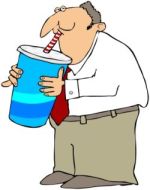Good Sources of Protein

Good Sources of Protein
You are made of protein
You may not know that you are made mostly of protein. If you take away the fat in your body and the water in your body, all that is left--your bones and muscles and tissues and hair and skin and fingernails and toenails and hormones and enzymes are mostly protein. When you think of it like that, you can see how important it is to include protein foods in your daily meal plans.
Generally, when protein in the diet is discussed, meat, eggs and dairy products are the main source mentioned. Another way of saying this is that most, but not all, of the protein in your meals comes from the main course.
Steak… Hamburger… Roast Beef… Pork chops… Ham… Bacon… Sausage… Hot dogs… Lamb chops… Chicken… Turkey… Duck… Capon… Fish… Shrimp… Lobster… Crab… Scallops… Venison… Omelets… Egg Salad…
Dairy products, such as milk, cheese and yogurt are also good sources of healthy eating protein.
In addition, there are some foods from plants that are good sources of protein. These are the legumes, grains, some vegetables, nuts and seeds.
Lentils… Split peas… Kidney beans… Pinto beans… Black beans… Soybeans… Garbanzo beans… Navy beans… Peanuts… Peanut Butter… Rice… Wheat…. Barley… Oats… Peas… Kale… Okra… Walnuts… Brazil Nuts… Almonds… Pumpkin Seeds… Sesame Seeds….
Most of the food you eat has some protein in them, but those foods listed above, are good sources of protein that will make it easier for you to fulfill your daily protein requirement.
Fun Fact for Good Sources of Protein: Your body can actually reuse the protein from the cells of your gastrointestinal lining when they are sloughed off and replaced with news ones. This allows you to have a supply of protein available from another source besides the food you eat. It's a sort of protein storage depot!
Good Sources of Protein - Complete vs. Incomplete
If a food contains all of the essential amino acids are called “complete proteins.” These complete protein foods are generally animal foods. Plant foods do not, as a rule, have complete proteins, but by eating combinations of plant foods, called “complementary proteins, ” you can make a complete protein.
For example, when you eat pinto beans with rice, such as is often found in Mexican cuisine, you are obtaining a complete protein. The beans and rice complement each other, in that each has some of the essential amino acids and when eaten together, they provide all of the essential amino acids. It is generally accepted that it's not necessary to eat these complementary proteins at the same meal.
Here is a list of complementary proteins that when eaten together become complete.
Legumes... with Nuts
Legumes... with Grains
Legumes... with Seeds
Legumes... with Dairy
Grains... with Dairy
Nuts/Seeds... with Dairy
Nuts/Seeds... with Legumes
Dairy... with Nuts/Seeds and Legumes

What is a serving of protein?
If you don't have a meat scale, the usual guideline for visualizing meat servings is that the portion should be the size of a standard deck of playing cards. (Just imagine how many actual servings are represented by that large prime rib served at your favorite restaurant!)
For meatless protein sources, a serving, which is 1 large egg, ½ cup cooked beans or rice, or 2 Tablespoons of seeds, nuts or peanut butter, is equivalent to only about 1/3 of the protein in a serving of meat. Tofu can also be included in this group with a serving size of about 4oz.
In addition, most healthy eating experts recommend that, whenever possible, choose a leaner or low-fat version of the significant protein sources.
What if you don’t get enough?
If there is not enough protein in your diet, it will have a noticeable effect on your health, from making you susceptible to infections to actually causing you to waste away.
Severe protein deficiency is generally associated with starvation and malnutrition and is a major cause for concern in developing nations, especially among children.
In developed countries, protein deficiency is mostly associated with people in extreme poverty or those suffering with eating disorders, such as anorexia nervosa. Severe protein deficiency can lead to death.

